Your Cart is Empty

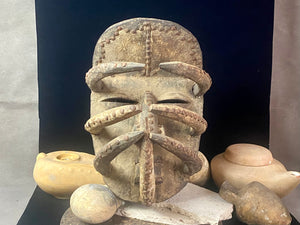
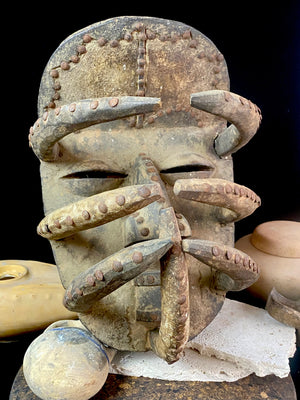
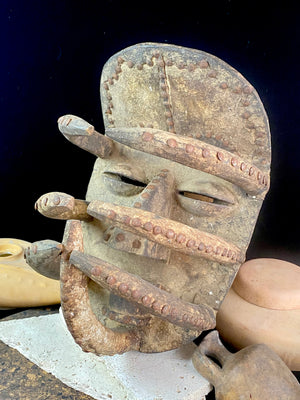

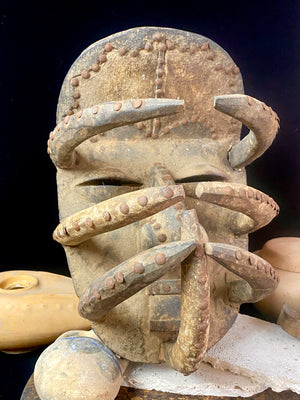
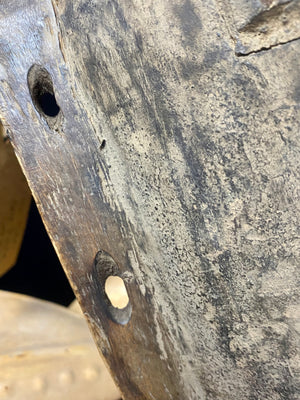

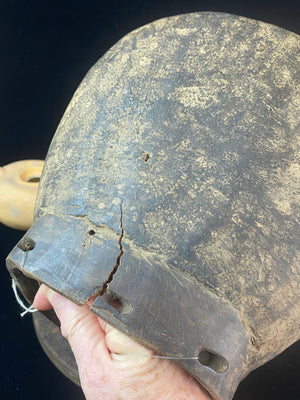
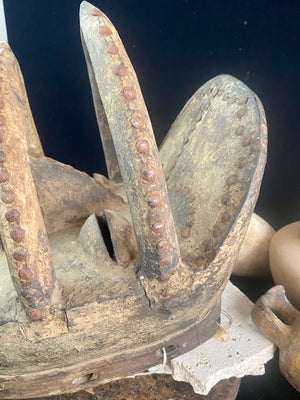

Sold out
Antique Bete Gre Mask
$960.00
Bete Gre mask. Dan Bete people, Cote D'Ivoire, west Africa. Early 20th Century.
Gre or Gle masks are worn during ceremonies designed to restore peaceful relations and harmony after outbreaks of tribal war. They also serve to cleanse a village of evil or disruptive spirits, preside over dispute settlements and punish wrongdoers. These peacekeeping functions are indicated by the nearly closed eyes and small mouth.
Wood, metal, remnant white pigment. Oval shaped with strong abstracted facial features and seven protruding curved and metal studded prongs, representing boar's tusks, that cover the face protectively. The eyes are slitted, the nose is prominent, the mouth is small, and all features are highlighted with the same metal studs that adorn the curved tusks. Forehead dome is pronounced and jutting. The rim of the mask is pierced for attachment purposes. Condition: very good, but note the prominent crack to the rear of the mask as shown in one of the pictures. This mask dates to the early 20th century or earlier and is a used, functioning mask, as can be seen by the wear marks that show at the attachment holes.
Measurements: height 31 cm, width 22 cm, depth 26 cm.











